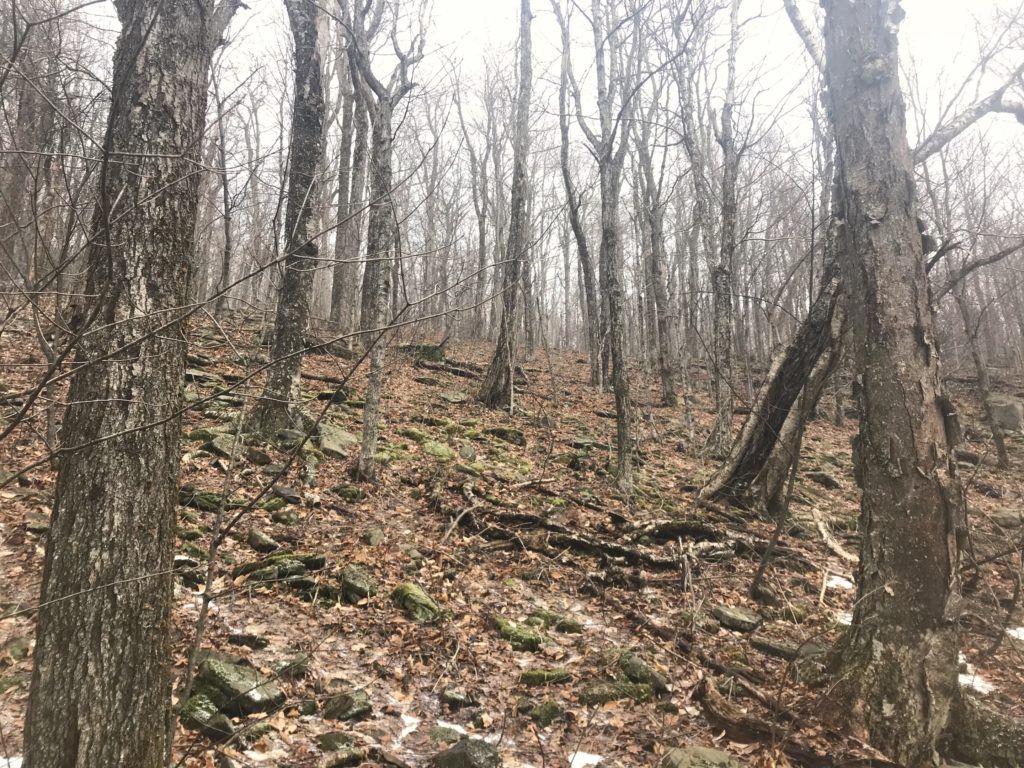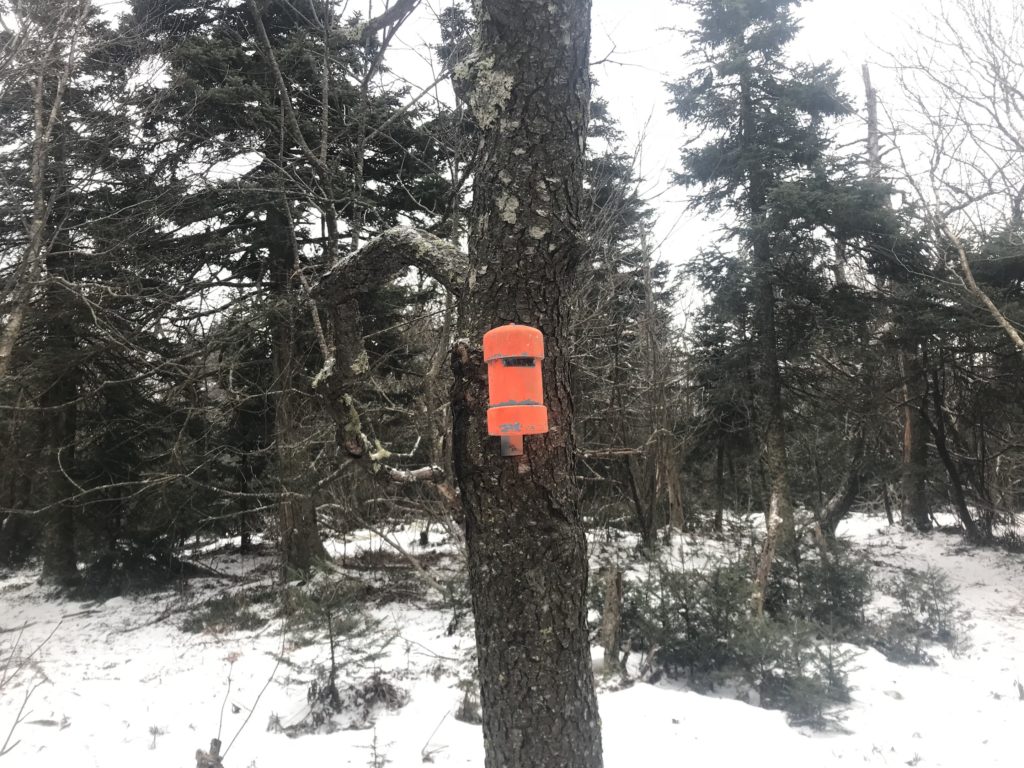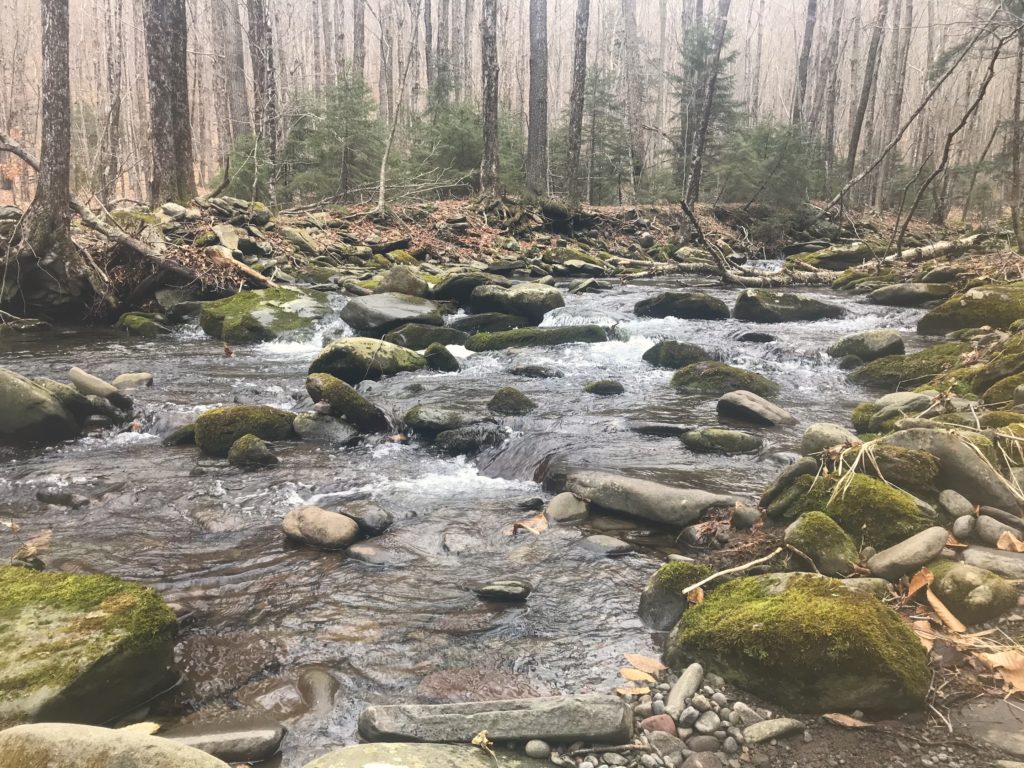
Yesterday’s attempt to climb Rusk Mountain – our second – was a success, probably because the conditions were ideal. The first few miles of the ascent was a soft, bouncy carpet of fallen leaves, as most of the snow had melted, but we were followed by passing clouds that sprinkled dry, granular snow. As we climbed, we were still able to discern the trail of previous hikers – a dark trail of wet, disturbed leaves that snaked up the mountain. The summit of Rusk is a tangle of aging, gnarled spruces, some darkened by lightning, presiding over its younger generation of fern-like trees. The sign-in canister, painted a vivid, hunting orange, was attached to what looked like a lone cherry tree amidst this mess of pines that looks like a spiky hairdo.

Rusk is a popular hike because it’s short, but very steep – an elevation gain of 1600 ft – so if you’re fit enough you can be up and down in a few hours, so it’s often hiked with its sister mountains, East Rusk, Hunter and Southwest Hunter. When you get to the summit, it’s possible to see down the equally steep north side of the mountain and Jewett below.
We began at the start of the Spruceton Trail, also a riding trail, to Hunter Mountain from the second parking area on Spruceton Road, with the wooden horse loading station. The winding Spruceton Road is a picturesque, bucolic scene, dotted with barns, farms, churches with family graveyards, an inn (with a bar) and a brewery, all nestled in the stunningly gorgeous Westkill Valley making this area a popular destination.

The Spruceton trail is blazed blue and you take this trail to just after the wooden bridge over Hunter Brook, before the horseshoe turn, where you leave the trail and go north, following Hunter Brook, then continuing up to the saddle in the ridge between Rusk and East Rusk, and then walking west along the ridge to reach the summit of Rusk. (If you approach the summit from too far west, there will be ledges to tackle that ice over in the winter and become treacherous, which is what scuppered our first attempt.) There’s plenty of young beech to hang onto as you pull yourself up the mountain, but the last stretch of about a half-mile before the summit is a scramble.
On the descent, as the snow got much heavier, it was possible to see Hunter and Westkill Mountains through the trees like ghosts, made more stunningly beautiful by the clouds of fog rolling through its valleys: utterly breathtaking.
Six more peaks to go on the list, all bushwhacks: Rocky, Lone, Sherrill, North Dome, Balsam Cap and Friday.
High on the list recommendations in the Westkill Valley is a post-hike Moon Farmer IPA from Westkill Brewery, not like an IPA at all, but like a wheat beer, sweet and heavy on the citrus.
Go to invaluable Catskill Mountaineer for a detailed description of this hike. Bushwhacks are trail-less hikes and not for beginners. There’s only a mobile signal on the summit, but no service below that, and the cold temperatures at the summit can freeze your phone. Always hike safely and know before you go.
Enjoy your Catskill Mt.s photographs…